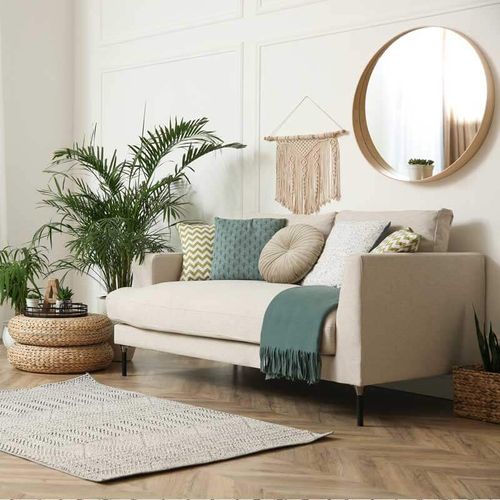If your existing sofa feels too low to the ground, raising its height a few inches can greatly enhance both comfort and aesthetics. With careful planning and the right approach, you can give your furniture a subtle lift while maintaining structural integrity and visual harmony. Here are several key factors to pay close attention to when undertaking this adjustment project:

Thoroughly Assess the Existing Frame and Legs
The first step is to examine the sofa’s current underlying frame and legs to ensure they are sufficiently sturdy to accommodate the extra height. Solid hardwood or plywood frames paired with dense wood, metal, or composite legs often have the strength to handle extensions of 2-4 inches. However, sofas made with weaker pressboard frames or hollow plastic legs should only be raised by an inch or two to avoid collapse. Always check manufacturer recommended weight limits as well.
Precisely Measure Desired Added Height
Decide how many inches you want to raise the sofa – 2 to 4 inches is common. While a boost of 6 inches or more may sound tempting, too much added height can make sofas become top-heavy and prone to tipping. Use a measuring tape to find the exact sofa height increase that will meet your goals. Have helpers carefully lift the sofa to test the raised seat height before permanently attaching any extensions to find the optimal gain.
Select Hardware Attachment Methods That Are Ultra Secure
The way you choose to elevate the sofa must be very sturdy and secure. Screw-on metal leg extenders that attach directly to existing legs are often one of the most reliable options. If using risers, verify they attach tightly to the original legs with provided hardware – the last thing you want is wobbly extensions that detach under body weight. Built-in anti-tip cross bars also provide peace of mind.

Match or Complement the Existing Frame Style
When selecting leg risers or extenders, try to choose options that will match or complement the sofa’s current visual frame style. For example, ornate brass or antique bronze casters or risers for claw foot or cabriolet legs, or sleek modern chrome extenders for sofas with straight metal legs. Mismatched leg finishing and styles will look disjointed and clash.
Adjust and Level All Extenders Evenly
It’s crucial to adjust the leg extensions precisely and evenly so the surface remains perfectly level after raising the height. Once attached, slowly sit and gently bounce on spots all around the lifted sofa to rigorously test whether the extensions are solidly holding position without any rocking or signs of detachment. Even the slightest wobble can worsen over time.
Incorporate Stabilizing Accessories for Extra Security
For added stabilization once lifted, it’s wise to incorporate supportive accessories like heavy-duty corner leg braces, horizontal metal crossbars between rear legs, or an anti-tip kit that secures the sofa to the wall stud. This prevents any swaying or tipping forward which can result as the center of gravity shifts upward with height extensions.
Double Check Ceiling and Entryway Clearances
When deciding how high to raise the sofa, carefully factor in any ceiling height limitations as well as doorway or stairwell entry clearances. Use a measuring tape to ensure your elevated sofa will still easily fit through hallways, foyers and any tight turns without having to be partially dismantled. Any required disassembly becomes much trickier after height extensions are added.
Exercise Caution Not to Damage Legs During Installation
Take great care not to damage existing furniture legs or frames when lifting to attach risers and extensions. Having an assistant provides extra support and stabilization. Prevent scratches by using clean, soft cloths or pads between attachment hardware and legs. Work slowly and gently to protect both the sofa and your back!
Choose Riser Finishes That Complement Your Decor
Be sure to select leg risers or base extension casters that complement your existing decor aesthetically. Painted metal, bronze, wood, chrome, and other neutral metallic finishes typically pair best with most sofas. Just take care that added extenders don’t detract from the sofa’s overall visual style – unless a deliberately eclectic mixed design look is your intent.
With proper planning, care, and the right lift method, elevating a sofa can update its design silhouette and greatly improve seating ergonomics. Keep all of the above considerations in mind for optimal form, function, safety, and seamless style blending.
